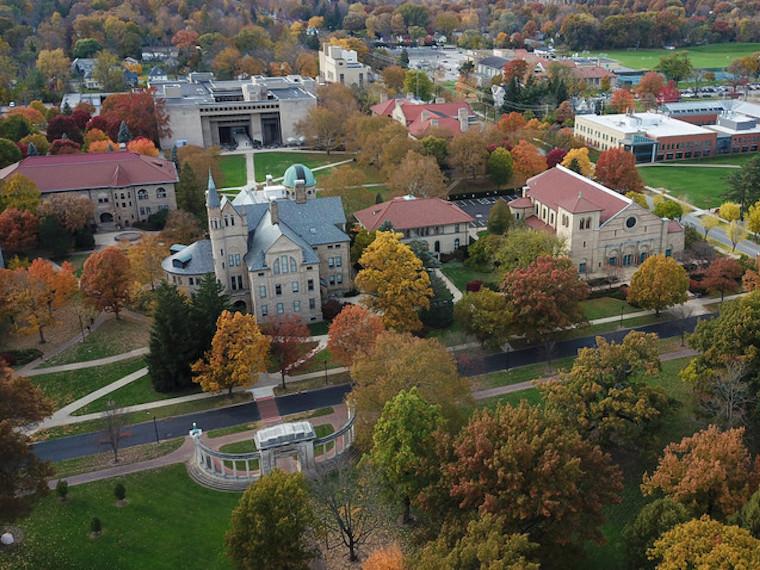Carbon-neutrality project becomes more visible with temporary tree removal
May 17, 2021
Office of Communications

Oberlin’s march toward carbon neutrality will become a little more visible this week as crews begin removing a limited number of trees and bushes, making possible the multi-year, campus-wide heating and cooling overhaul that will make Oberlin a national leader in clean energy.
The $140-million project will ultimately include a conversion to a geothermal energy source, retrofitting buildings for maximum efficiency, and replacing century-old steam pipes with efficient hot and chilled water lines that dramatically reduce the loss of thermal energy and water.
Oberlin’s facilities team has been working with an arborist to find the least disruptive way to excavate the deteriorating steam pipes and ensure that the campus achieves a net benefit to its trees and vegetation by the time the project is complete.
In this phase, crews expect to remove and examine 97 trees from across the 440-acre campus, including 25 small trees. Those that are healthy enough to be transplanted will be moved to other parts of campus. Trees that have already reached the natural end of their lifecycle will be replaced, one for one, with varieties that improve the longevity, biodiversity, and canopy of the campus environment. A few old trees may find new life on campus, such as two large white oaks that will be milled and seasoned for future use in projects such as outdoor furniture.
“In consultation with the Committee on Environmental Sustainability, our project team is working to make sure not only that we achieve our ambitious long-term goals for a greener Oberlin, but that we undertake this construction in a way that respects our campus and the daily life and work of our community,” said Meghan Riesterer, assistant vice president for campus energy and sustainability.
Though this first phase of landscaping will continue into June, to minimize disruption, much of the work will take place during the next two weeks. For more information and regular updates on construction, please see the project website CarbonNeutral.oberlin.edu.
Having reduced its carbon footprint by more than half over the last 15 years, Oberlin plans to reduce net carbon emissions to near zero by 2025, which would make it one of the first college or university campuses to approach that milestone. The geothermal energy project getting underway this summer represents the most important remaining element in that push for environmental sustainability—a project also made necessary by the age and condition of the existing heating infrastructure, some of which dates to the early 20th century.
In an email to students, faculty, and staff in April, President Carmen Ambar said the project “will show other large institutions across the country that it is possible to improve living and working conditions for students, faculty, and staff, while addressing a global challenge that touches all of us.”
You may also like…
Oberlin’s Sustainable Infrastructure Program Reaches Major Milestone
Geothermal heating and cooling system comes online, supports Oberlin reaching 100 percent carbon neutrality by 2025.
Oberlin’s Sustainable Infrastructure Program Enters Key Phase
Four-year project to convert campus heating and cooling system set for drilling of 850 geothermal wells.


